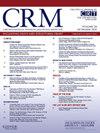研究非心脏手术后患者的人口统计学特征和主要心脏不良事件:应用健康公平视角。
IF 1.6
Q3 CARDIAC & CARDIOVASCULAR SYSTEMS
引用次数: 0
摘要
背景:重大心脏不良事件(MACE)是导致术后并发症的主要因素。本研究采用健康公平视角,按种族和民族划分,研究术后 MACE 的发生率:这项单中心、回顾性观察队列研究跟踪了 2008 年至 2018 年期间接受非心脏手术的已植入或未植入冠状动脉支架的患者。MACE是主要结局(死亡、急性心肌梗死、重复冠状动脉血运重建、支架内血栓形成),自我报告的种族和民族是主要预测因素。采用非西班牙裔白人(NHW)患者与所有其他少数种族和族裔人群(西班牙裔和黑人)1:1队列的倾向得分模型来比较该队列中围手术期MACE的发生率:在研究期间,有79686个病例被纳入分析样本;950名患者(1.2%)在手术前已植入冠状动脉支架。结论研究发现,在接受非心脏手术的患者中,不同种族和族裔的MACE差异无统计学意义。入住像本研究中这样的高容量、高质量医院可能会减少医疗差异的存在,这也可以解释为什么我们的研究结果与之前的研究结果不一致。本文章由计算机程序翻译,如有差异,请以英文原文为准。
Examining patient demographics and major adverse cardiac events following noncardiac surgery: Applying a health equity lens
Background
Major adverse cardiac events (MACE) are a major contributor to postoperative complications. This study employed a health equity lens to examine rates of postoperative MACE by race and ethnicity.
Methods
This single-center, retrospective observational cohort study followed patients with and without pre-existing coronary artery stents from 2008 to 2018 who underwent non-cardiac surgery. MACE was the primary outcome (death, acute MI, repeated coronary revascularization, in-stent thrombosis) and self-reported race and ethnicity was the primary predictor. A propensity score model of a 1:1 cohort of non-Hispanic White (NHW) patients and all other racial and ethnic minority populations (Hispanic and Black) was used to compare the rate of perioperative MACE in this cohort.
Results
During the study period, 79,686 cases were included in the analytic sample; 950 patients (1.2 %) had pre-existing coronary artery stents. <1 % of patients experienced MACE within 30 days following non-cardiac surgery (0.8 %). After confounder adjustment and propensity score matching, there were no statistically significant differences in MACE among racial and ethnic minority patients compared to NHW patients (OR = 0.77; 95 % CI: 0.48, 1.25). In our sensitivity analyses, stratifying by sex, there were no differences in MACE by race and ethnicity.
Conclusions
The study found no statistically significant differences in MACE by race and ethnicity among patients who underwent non-cardiac surgery. Access to a high-volume, high-quality hospital such as the one studied may reduce the presence of healthcare disparities and may explain why our findings are not consistent with previous studies.
求助全文
通过发布文献求助,成功后即可免费获取论文全文。
去求助
来源期刊

Cardiovascular Revascularization Medicine
CARDIAC & CARDIOVASCULAR SYSTEMS-
CiteScore
3.30
自引率
5.90%
发文量
687
审稿时长
36 days
期刊介绍:
Cardiovascular Revascularization Medicine (CRM) is an international and multidisciplinary journal that publishes original laboratory and clinical investigations related to revascularization therapies in cardiovascular medicine. Cardiovascular Revascularization Medicine publishes articles related to preclinical work and molecular interventions, including angiogenesis, cell therapy, pharmacological interventions, restenosis management, and prevention, including experiments conducted in human subjects, in laboratory animals, and in vitro. Specific areas of interest include percutaneous angioplasty in coronary and peripheral arteries, intervention in structural heart disease, cardiovascular surgery, etc.
 求助内容:
求助内容: 应助结果提醒方式:
应助结果提醒方式:


